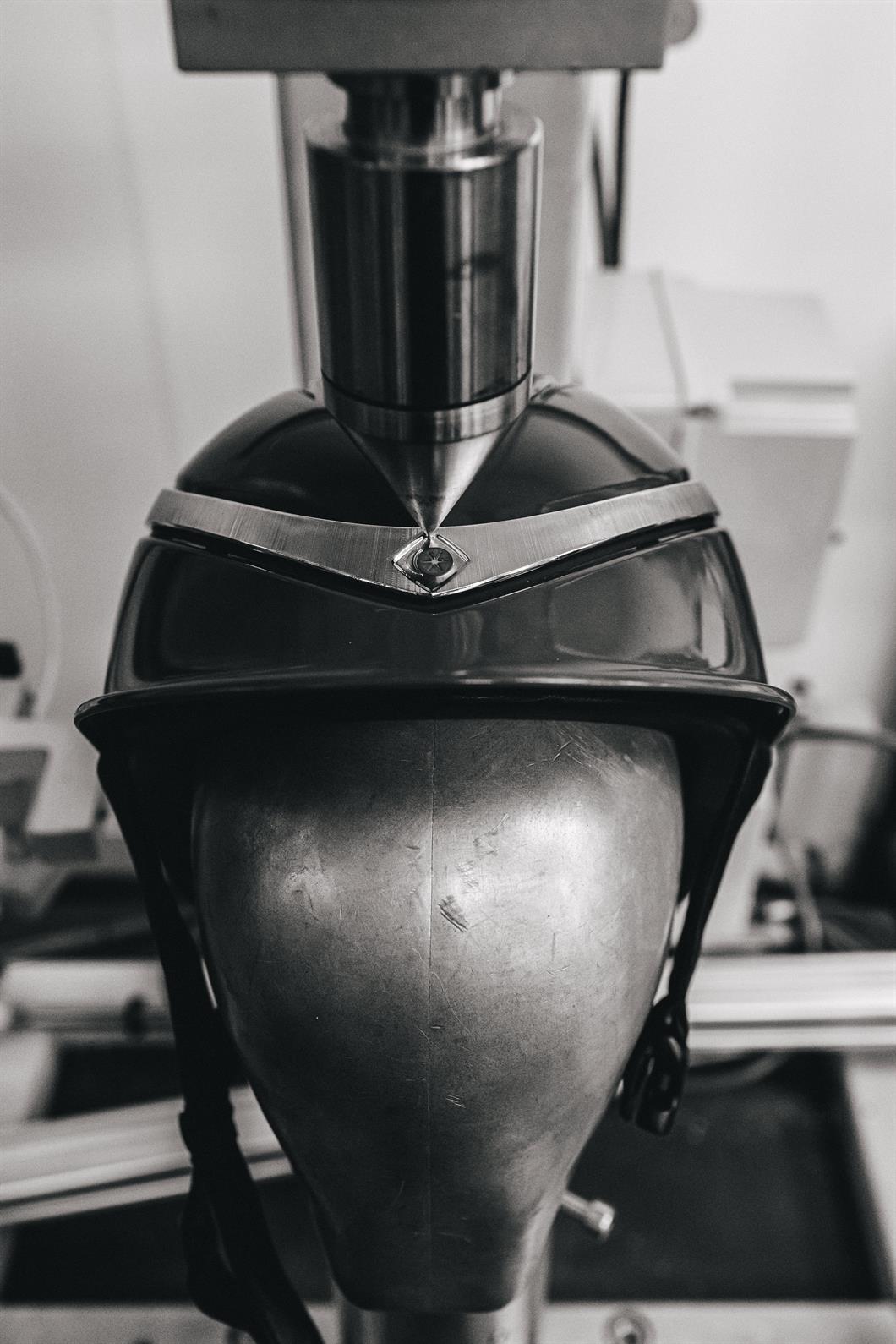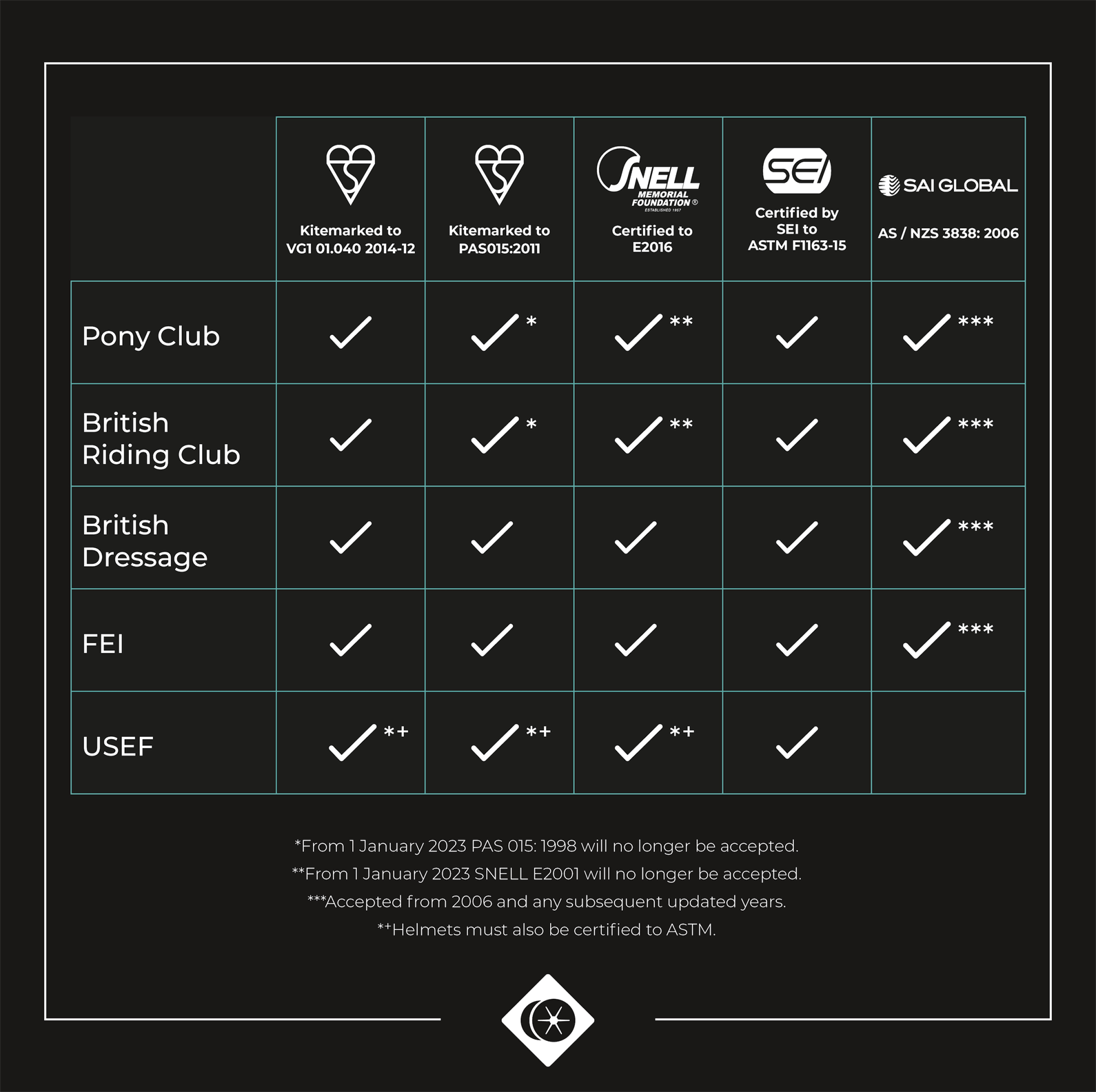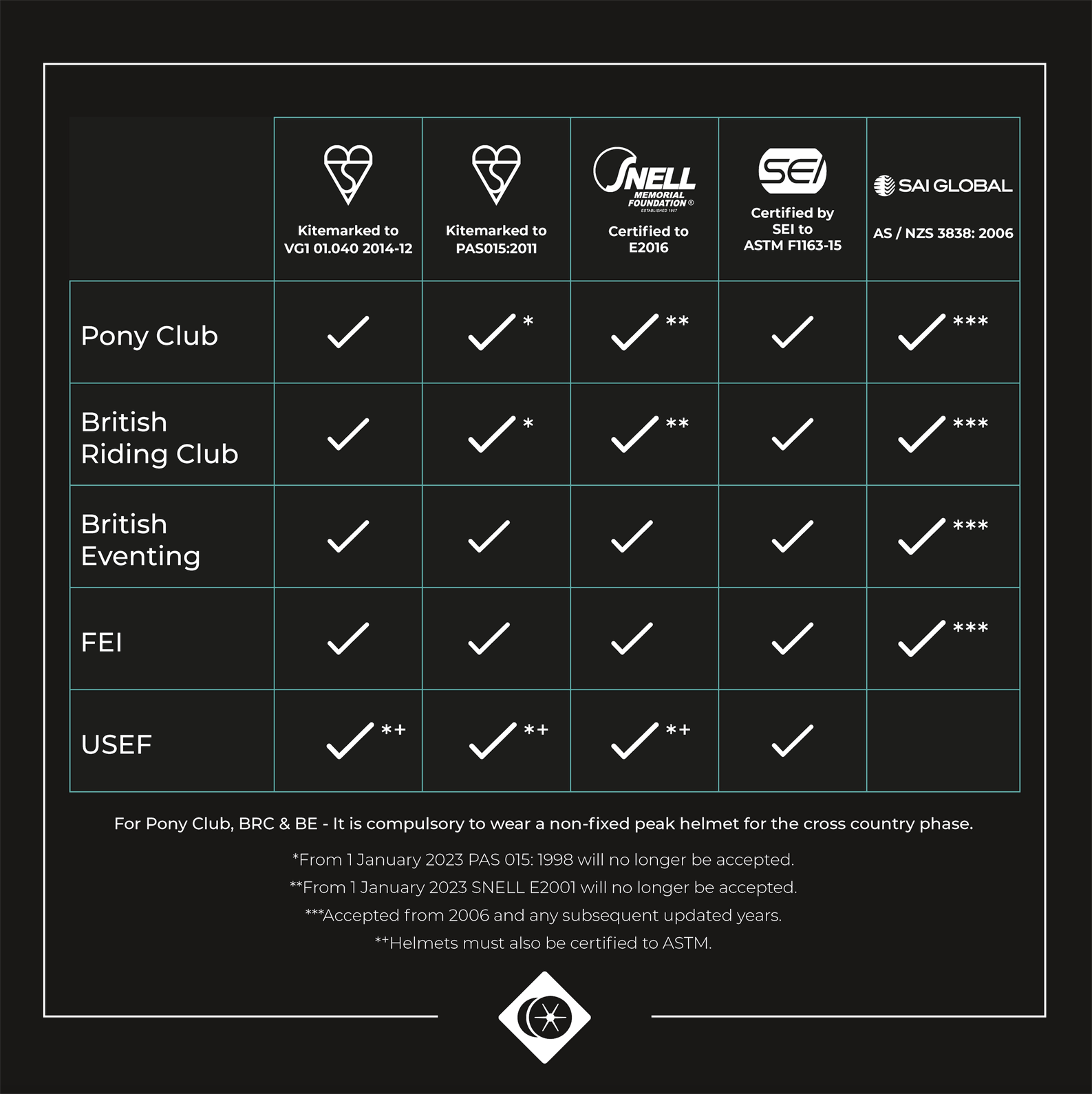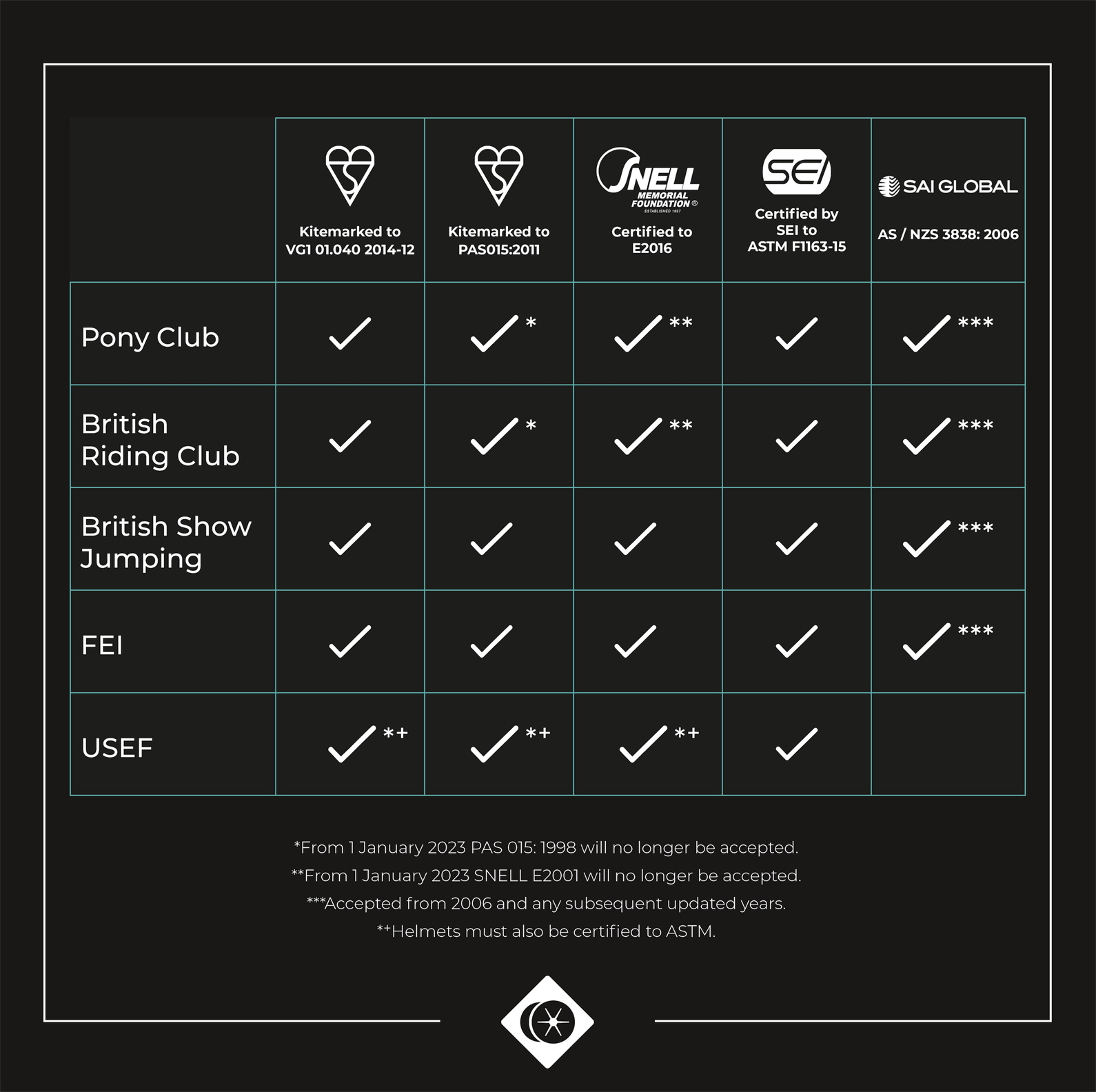
Photo: Farrell Guy
One of the most important things an equestrian, or the parent or guardian of an equestrian, will ever do is select a helmet. A helmet, after all, isn’t just a stylish part of equestrian attire (although it can be that, too!); it’s also a crucial piece of safety equipment. So what should you know before starting your search for the perfect helmet for you or your child? How can you judge a helmet’s protectiveness? And what other factors should you consider before making a helmet purchase?
We sat down with a team of experts from Charles Owen, which has been manufacturing superior helmets for more than 110 years. The company is renowned for its rigorous focus on helmet safety—and for consistently raising the bar for equestrian helmet safety standards—so we asked their advice on choosing the right helmet for your discipline, ensuring a proper fit, and more.
UNDERSTAND YOUR SPORT'S REQUIREMENTS.
“I would start with the discipline: what equestrian sport will they be participating in?” said Becci Flanagan, Marketing Assistant and helmet fitter at Charles Owen. “Where are they going to be using the helmet? Are they going to be competing or are they going to be doing general trail riding?”
Hunter/jumper equitation helmets won’t necessarily be the same as eventing helmets, and, if you plan to compete, it’s important to factor in any helmet rules and conventions that apply to your particular discipline.
“If your child is just starting to ride horses, there are safe helmets at a more economical price that will be able to do that,” Flanagan explained. “As you or your child specialize, whether you’re eventing, trail riding, or doing dressage, you want to get a helmet that is accepted in that discipline."
Learn more from Charles Owen’s online guide “Best Horse Riding Helmets for Each Discipline.”
CHECK AND UNDERSTAND THE SAFETY STANDARDS.
Once you are clear on what your chosen discipline requires, look for suitable helmets that also meet at least the main international safety standards, Charles Owen’s experts say.
“Riders should look out for the standards that the helmet meets,” Flanagan said. “The three main international equestrian standards to look for are Kitemark PAS015, Kitemark VG1, and ASTM. There’s also the SNELL rating for extreme levels of the sport, but the PAS015, VG1, and ASTM are the three main ones to look for. The majority of our helmets hold all three standards.”
The standards indicate that the helmet has passed specific testing, and the more of those standards a helmet meets, the more accident scenarios it is tested against, explained Charles Owen’s Head of Innovation, Matt Stewart. Every rider knows that each accident is different from the last, which is why your helmet needs to cover as many scenarios as possible. Kitemark PAS015, for example, denotes a helmet that has passed four tests: a crush-resistance test and tests that measure peak force to the head when the helmet is dropped on flat, edge, and sharp (or “spike”) anvils. ASTM includes flat and edge tests, and VG1 includes flat, spike, and crush-resistance tests.

“Each of these standards has different drop heights and different criteria. That is why it’s important to have a helmet with multiple standards,” Stewart explained.
Charles Owen has its own test lab and pre-tests to the standards before sending the helmet models for official testing and certification. The majority of Charles Owen helmets meet all three main safety standards, and their 4Star skull cap also carries an additional safety standard, the SNELL E2021 rating for extreme levels of the sport. “Our thought at Charles Owen is that if you have a helmet that is made for so many different scenarios, you’re protected for more real-world incidents,” Stewart said.
GET A PROFESSIONAL FIT.
Once you’ve identified that a helmet meets safety standards, then it must fit correctly. It’s important to have a helmet fitted by a professional at your retailer.
Charles Owen’s professional helmet-fitters start by measuring the head from just underneath the occipital bone (the ridge at the back of the head) to just above the eyebrow. “This gives us a guide to start fitting the helmet,” Flanagan said. “That measurement is the size of someone’s head but not necessarily their helmet size.”
To put a helmet on properly, Flanagan notes, begin by placing the front of the helmet on your forehead and then gently pressing the helmet down and backwards onto your head in a rolling motion from the front to the back of your head.
“A good way to figure out if your helmet is locking onto the back of your head at the occipital bone is if you hear a little suction sound,” noted Danielle Santos, Charles Owen’s Vice President of Sales for the U.S. and Canada. “That means it’s gripping onto the back of your head, and all the air has left the inside of the helmet and it’s sitting snugly all the way around, like a firm handshake.”
When you try on a helmet, the fitter will ask you where you feel pressure. “If you have individual pressure points on your head when you’re being fitted, that usually indicates that it’s the wrong helmet for you,” Flanagan said. “if it’s a constant, comfortable pressure all around and the helmet doesn’t feel like it is perched on your head, that’s usually an indication of a good fit.”
The helmet fitter will also run a thumb or fingertip around the inside of the helmet to detect any gaps or potential pinch points. If there’s a consistent, snug, and comfortable fit, they will complete the fit by fastening the chin strap and then tying up the laces at the back of the harness. Your chin strap should be secure, with one finger’s width between your chin and the strap.
To test a proper fit, try moving the front of the helmet slightly up and down from the peak/brim. “If the helmet moves independently from your head, it’s too big,” Flanagan said. “If it moves your eyebrows up and down, that’s usually a good sign.”

“That shows that the helmet’s headband is actually gripping the scalp,” added Santos. “Getting that proper fit is so important to your safety, because if your helmet doesn’t fit, it doesn’t matter what the safety standards are. If your helmet is falling off your head as you are falling off your horse, it’s not going to be able to protect you.”
Learn more in Charles Owen’s online guide “How to Measure and Fit a Riding Helmet.”
A NOTE ABOUT HELMET-FITTING AND LONG HAIR.
If you have long hair, the Charles Owen team recommends wearing it down or in a low ponytail during the initial phase of your helmet fitting, during which the fitter will want to confirm that the helmet fits the shape of your head.
“We fit helmets for the head first and then incorporate the hair after, once we’ve sufficiently confirmed that the helmet fits the shape of the head,” Santos said.
At that point, you can put your hair up inside the helmet.
“We have so many people who want to wear their long hair up, but their helmet still has to fit the shape of their head well without their hair up inside,” Santos said. “As a fitter, you don’t want them to twist their hair or make any bulky pressure points with their hair. As a rule of thumb, I don’t normally go up a size to fit the rider's hair in, unless they have extremely thick, long hair. There are other ways to incorporate the hair without going up a size.”
A suitable way to put your hair inside your helmet to achieve the "hunter hair" look without changing fit is to follow the following guidelines:
Using a quality hairnet, pull your hair into a low ponytail at the base of your skull, then lift the ponytail up and fan it out over the back of your head. It’s important to smooth your hair against your head, so it’s not changing the contour or shape of your head. Putting the helmet on from back to front, try to incorporate the hair tie into the back of the harness (not inside the shell of the helmet) to ensure the hair is up and tidy, without creating bulk or changing helmet size.
Another option for riders with long hair is the low, neat bun, which is seen mostly in dressage and eventing. Similarly to hunter hair, a rider will want to use a hairnet and low ponytail, but instead of lifting the hair of the ponytail up and fanning it out, the rider will want to create the bun at the base of the skull so it doesn’t interfere with the back of the helmet’s harness.
LOOK FOR INDIVIDUAL SIZES INSTEAD OF BROAD CATEGORIES LIKE SMALL, MEDIUM, AND LARGE.
“Our helmets come in three different shells: small, medium, and large. Our headbands/liners then determine the size of the helmet. A medium helmet can range from size 55 centimeters to 59 centimeters, so you can be in a medium shell but you need to choose the right headband/liner to ensure the best fit,” Stewart explained. Charles Owen is focused on the best helmet fit for each rider, using different systems to ensure the most tailored fit for every head.
There can be real-world consequences for an ill-fitting helmet. A helmet that’s too loose can slip or rotate on an athlete’s head during a fall, which makes it less protective. Even if a rider doesn’t have a fall, a loose helmet can irritate and distract a competitor while they’re trying to concentrate on their performance.
“One of the frustrations we hear from trainers here in the U.S. is that when a rider’s helmet doesn’t fit properly, they’ll be so focused on their helmet not fitting that they’re actually not doing what they need to do to win the class,” Santos said. “They’ll come cantering around a turn and they’re pushing their helmet back up over their eyes so they can see, and they’re doing that instead of focusing on their horse.”

BUY THE SIZE THAT FITS NOW, NOT ONE YOU EXPECT TO FIT LATER.
“Never get a bigger size for a child so they can grow into it,” Stewart said, because a helmet that doesn’t fit your child’s head properly at the moment of impact is not going to provide adequate protection. Buying a properly fitting helmet for each stage of your child’s growth is an important investment in safety.
“It’s also important for parents to know that children’s heads grow slowly from about toddlerhood until puberty,” added Santos.
CONSIDER THE MIPS FEATURE FOR ADDITIONAL PROTECTION.
The Mips system is, essentially, a low-friction “slip layer” in a helmet that helps redirect rotational forces from the head during a fall, especially during oblique impacts, Stewart explained.
“At the moment, the theory for concussion is that it is caused by the brain rotating in the skull,” Stewart said. “The head has an excessive rotation, as in a fall, and the brain catches up afterwards. So the Mips slip layer reduces some of that rotation by it moving, rather than your head. The Mips layer inside a helmet will move up to 15 millimeters. That takes away some of the excess movement of the head and the brain inside the skull, which reduces risk of concussion.”
Charles Owen manufactures several styles of helmets that incorporate Mips technology, an increasingly popular safety feature that many riders look for to add an extra layer of protection. Those helmets include the Halo, My PS and MS1 Pro models.
Learn about concussion in USEF’s online Learning Center and read more about the Mips system in USEF’s online article “You Only have One Head—Look After It!”
KNOW WHEN TO REPLACE A HELMET.
The maximum lifespan of an equestrian helmet is five years from the date it was first worn, so even if you haven’t had an accident with your helmet, you should replace it due to natural wear and tear on the helmet’s protective materials. Charles Owen recommends replacing a helmet every three to five years, depending on how frequently you ride.
But if your helmet has been involved in a fall, kick, or any other impact—even if it has been dropped and the impact seemed small—replace it immediately. Impacts compromise a helmet’s protective qualities, and while some damage, like a crack, is obvious, not all damage is visible. For example, the hidden energy-absorbing liner will be crushed in a fall. The act of this crushing means the liner is absorbing the forces rather than your head. This is the invisible internal damage. You can see this in Charles Owen’s "Helmet Safety Check" video.
To learn more, visit Charles Owen’s online guide “When Should You Replace a Riding Helmet?”


